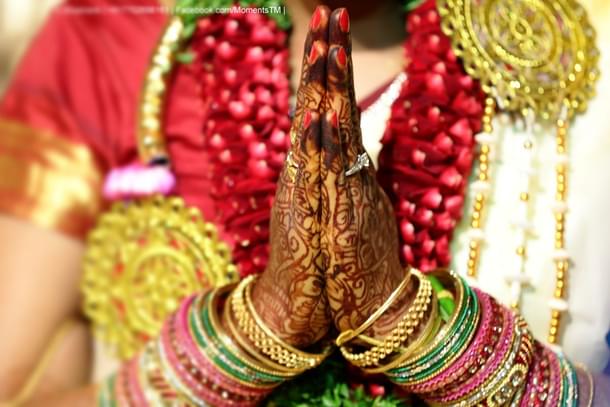Culture
Kanyadaan Is Not What You Think It Is
Aravindan Neelakandan
Sep 22, 2021, 10:31 PM | Updated 10:30 PM IST
Save & read from anywhere!
Bookmark stories for easy access on any device or the Swarajya app.


Recently, a new ‘woke controversy’ was created over a non-issue - the term kanyadaan. 'Am I, a woman, a commodity to be given away in charity?', so the argument runs.
Given the wide-spread cultural illiteracy, the argument gives an appearance of being sensible.
However, the term daan does not merely imply the giving away of material possessions as alms. Daan is a sacred act - done in the spirit of yajna. The Skanda Purana enumerates how the person who does daan should search for a suitable person to offer the daan to.
Talking of kanyadaan specifically, it does not reduce the humanity of the girl to a commodity. Instead, it is meant to make the father of the woman realise the importance of his duty. Duty, a word that causes much discomfort in the circles that were cheering the ad that took a jibe at kanyadaan.
Kanyadaan—the word, the idea, and the practice—are part of a universe that also has the term swayamvar - where the girl could choose her husband and in many instances, in utter disregard of her parents' wishes. The same culture also has the concept of the gandharva-vivaha.
But all these may not make sense to the ‘wokes’, for they get their signals, ideas, and topics of outrage from the West. So, let us make a brief comparison.
The Decalogue (the Ten Commandments) forms one of the cardinal foundations of the Jewish religion and the Christian faith. And what does the last of the commandments say? It states that ‘one should not covet one's neighbour's house; should not covet neighbour's wife, or male or female slave, or ox or donkey, or anything that belongs to one's neighbour.
Note that God did not bother about coveting the neighbour's husband. In fact, the seventh commandment has already made an explicit statement: 'Thou shall not commit adultery'; Because what an independent male does, is an act of free will and choice and hence gets covered by adultery. But coveting the wife comes in the list of coveting a property, along with slaves, male or female.
How many advertisements have you seen that go all woke against the last commandment?
If one takes the Hebrew Bible as a whole then one will understand that the last commandment was a result of its times. At the same time, it enshrines in it the lives of the various women it depicts, in all their feminine individuality and valour. So if an advertisement today tries to essentialise entire Judaism or Christianity with the last commandment of the Decalogue, then it would be seen at best as an immature intervention and at worse as hate propaganda.
Or, let us look at another religion which enjoins that a ‘bride price’ be paid before marriage. Have you ever seen an advertisement where a bride asks the officiating priest of a particular religion why should only the father of the girl accept the mandatory money from the father of the other side? Is that not like selling the girl? ‘Let us do away with this mandatory money business that looks very much like bride money’. One can only imagine how many violent protests would have filled the streets of India if only such a suggestion was made.
But the defence, nay celebration, of kanyadaan is not dependent on comparison with the wedding rituals of other religions. By itself, the emotional, ritual, cultural, and philosophical significance of kanyadaan gives it perhaps the highest position amongst rituals that are part of a Hindu wedding. The kanyadaan, in its performance, elevates the parent-daughter relationship from emotional and filial to sacred. Remember here (and as the ad in question also shows) that there is no counterpart to the kanyadaan for the groom and his parents. This high seat of sanctity is reserved for the girl and her family. Shaming them into sharing this privilege with the boy’s family betrays an insensitivity that can only come when a ‘woke’ mind is in desperate need of a dose of outrage.
Sorry ad guys, but Hindu families are not your ‘sales pitch’.




